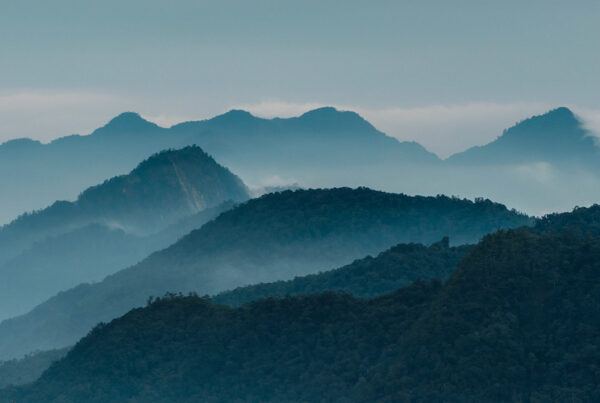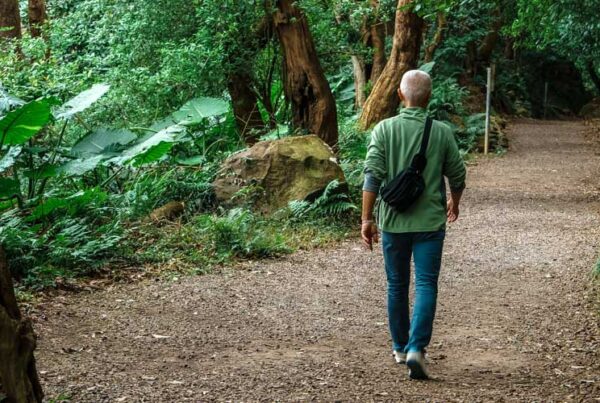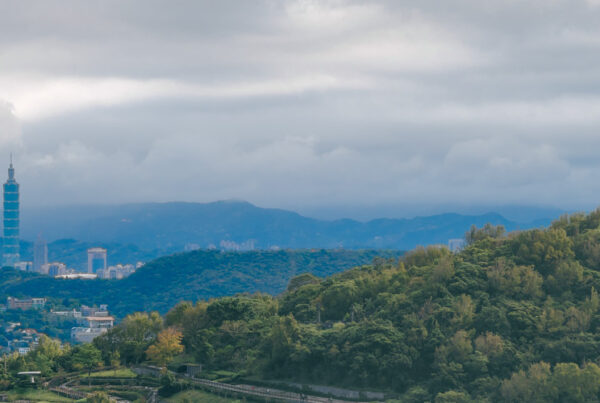For the most spectacular views of Taipei City, head to the observatory high up in Taipei 101. For views from a somewhat lower level, but this time including the towering skyscraper, head to Elephant Mountain, one of the peaks of the Four Beasts Mountain. Instead of a super-fast elevator ride, you’ll be slowly climbing steep trails of stone steps – lots of them – but you will be rewarded with fresh air, a marvelous vista, and a well-deserved sense of accomplishment.
Text: Richard Saunders; Photos: Twelli, Vision
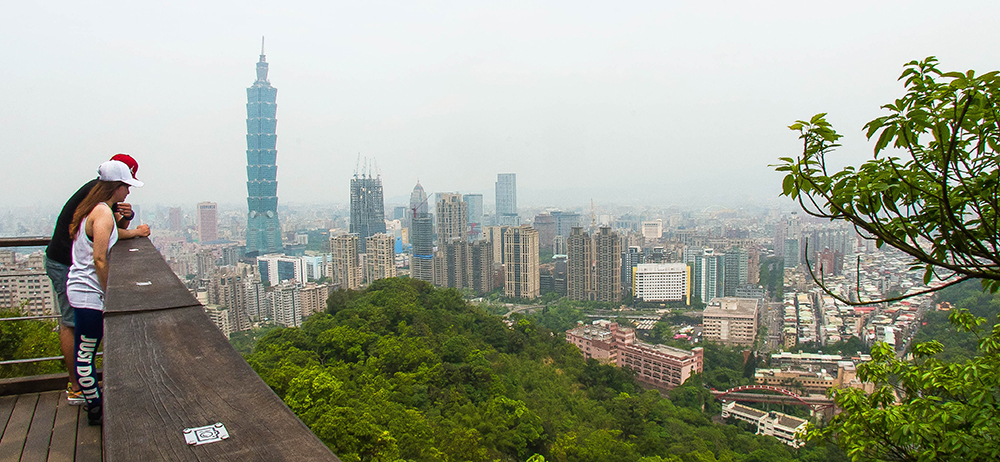
Taking in the view from Elephant Mountain
Taipei 101, the city’s highest building and perhaps its most instantly recognizable one, is one of the most photographed landmarks in the Taipei metropolis. It looks great snapped from street level, looming above the department stores of the surrounding Xinyi District, or captured from its foot, towering above. For the most iconic photo shot of Taiwan’s tallest building, however, take the MRT to Xiangshan Station, and follow the signs to the trail up Elephant Mountain. It’s a steep climb up hundreds of tree-shaded steps to the top, but after a 20-minute clamber, a cluster of huge natural boulders scattered beside the trail mark the preferred spot for countless tourists, local shutterbugs, and professional photographers alike to capture pics of the great skyscraper and the great city surrounding it.
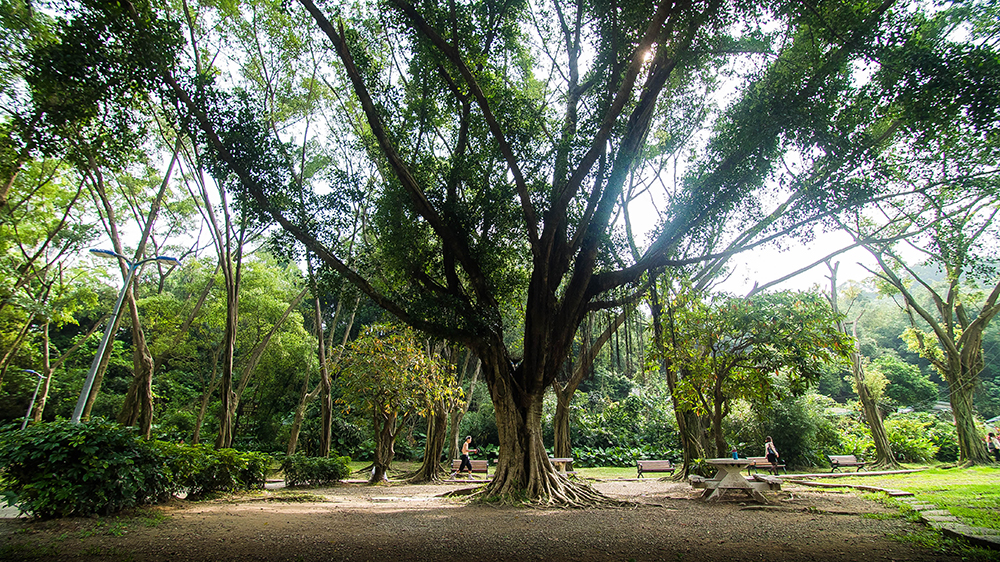
Zhongqiang Park near MRT Xiangshan Station
Elephant Mountain is one of the four “beasts” of Four Beasts Mountain, a cluster of wooded peaks (nine in total, actually) on a low but scenic ridge immediately south of Taipei 101. The beasts (Elephant, Lion, Panther, and Tiger) are a quartet of compact but steep spurs emerging from the higher main ridge behind, and viewed from some angles (in front of Song Shan High School of Commerce and Home Economics, for instance), the peaks that jut out of the ridge do, with a bit of imagination, bring to mind the forms of crouching animals. The ridge behind the beasts is somewhat higher, with a sequence of peaks, including Mt. Muzhi (Thumb Mountain), 95 Peak, and Mt. Nangang, all connected by a network of mostly surfaced trails which can be strung together in a variety of ways for a whole range of hikes.
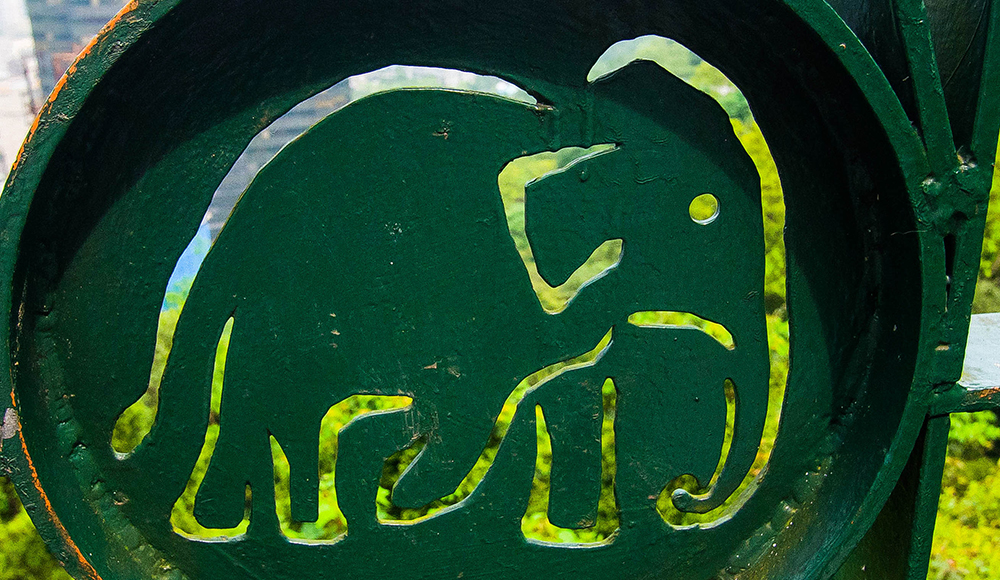
Elephant Mountain elephant
Not surprisingly, the peaks are a favorite destination for local residents and hikers from all over the Taipei area, and while the opportunity to snap the famous view from Elephant Mountain draws many foreign tourists, there are enough natural and cultural attractions to combine with this scenic draw to make a fine half-day hike that is an easy and very convenient short escape from the urban jungle.
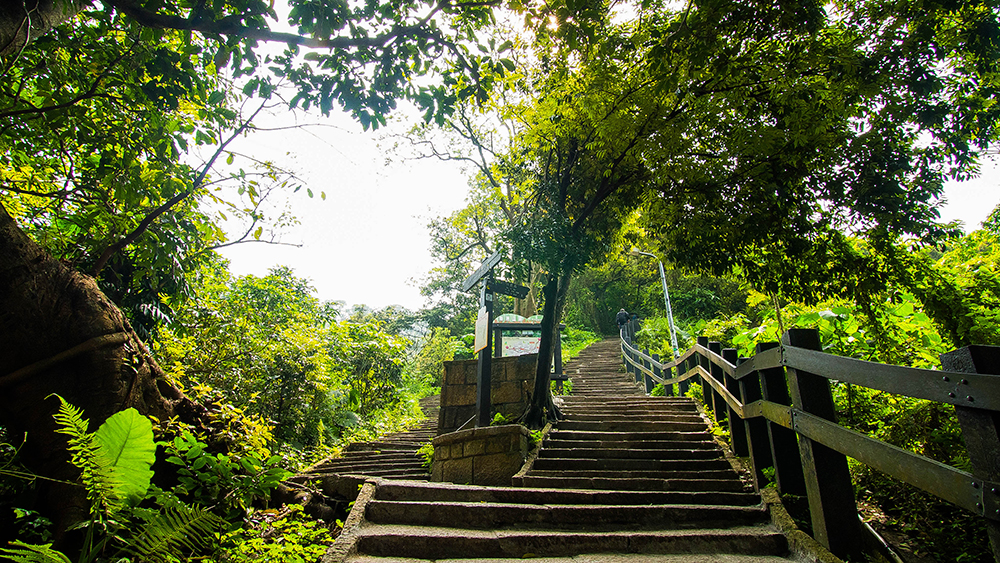
Steep stone step trails up Elephant Mountain
Most people’s introduction to Four Beasts Mountain is through the direct trail to the top of Elephant Mountain, but although very convenient to access (from MRT Xiangshan Station, on the Taipei Metro’s Red Line) and very popular, it’s a long, steep climb, and a sometimes hot and humid introduction to the area’s delights during the summer months. For an easier (and more interesting) introduction, take the Blue Line to MRT Houshanpi Station (two stops east of Taipei City Hall Station), leave by Exit 2, and walk south down Zhongpo South Road. If you pass this way in the morning, the street will probably be crowded with locals going about their daily business, as during the day this is a traditional market, with street vendors taking over the area. At the end of the street, turn left into Fude Street, another very traditional area and a wonderful contrast to the trendy, efficient ultra-modern part of the Xinyi District just a short walk northwest.
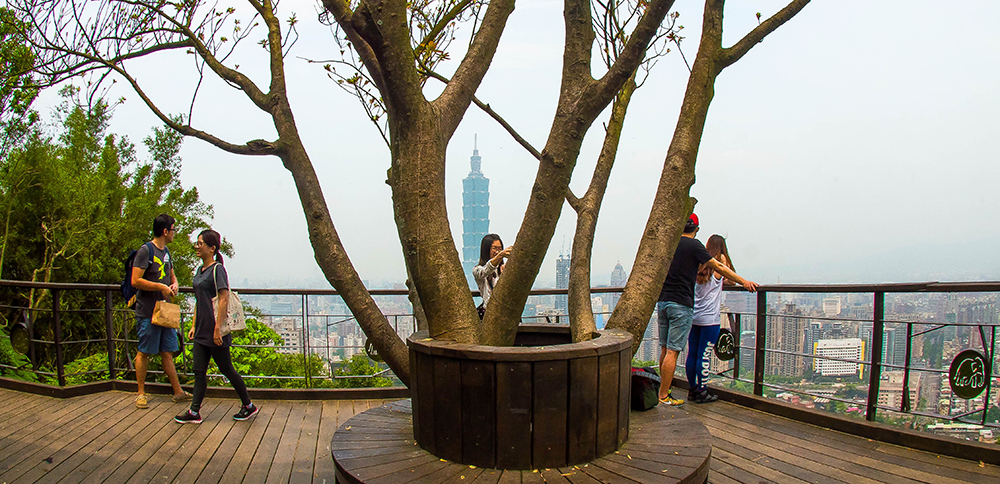
Elephant Mountain observation platform
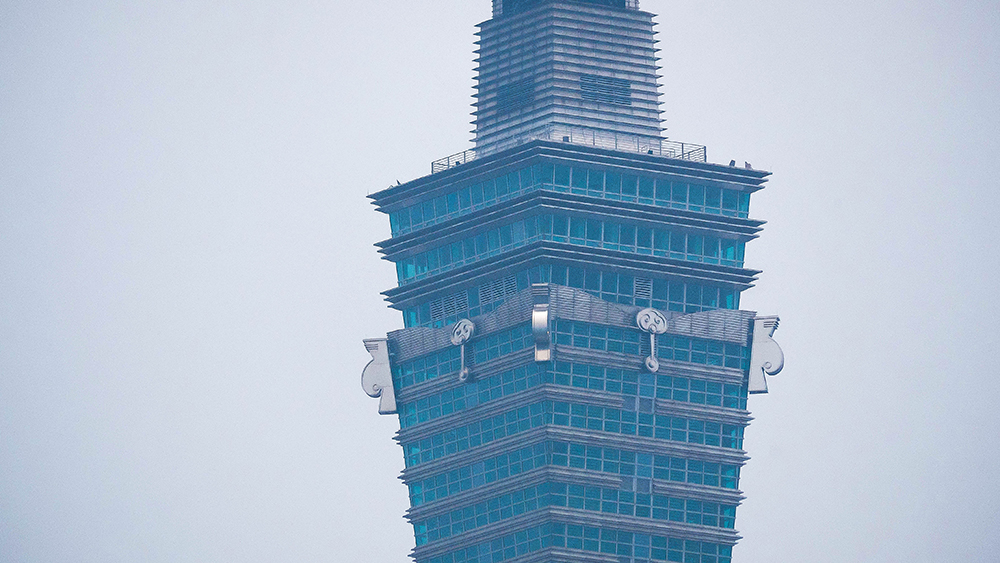
Taipei 101 tower
Then take the second turn on the right (Lane 221), and, a short distance along this lane, pass through a large and imposing temple gate on the right, and move up the steps and into the main courtyard of Songshan Fengtian Temple. The temple, although not old, is a fine-looking structure, and worth a look before starting the climb up to the ridge. The trail starts as a rather steep-looking flight of steps at the rear right corner of the temple compound. It’s certainly a strenuous start to the hike, but after just a couple of minutes the steps emerge onto a lane next to a tiny temple that has been built inside an old air-raid shelter cut out of the solid rock on the lower slopes of Tiger Mountain. A door at the back of the little shrine connects with the other half of the shelter, which has found a new use among locals as a karaoke parlor.
Take the trail that begins beside the entrance to the cave karaoke parlor, and climb steadily along the narrow ridge that is reached, stopping to admire the great views over Taipei 101 and the city beyond from a couple of flat, rocky promontories to the right of the path. From this point it’s just a short walk to the viewing platform at the top of Tiger Mountain – follow the signs – which commands the best city panorama enjoyed to this point.
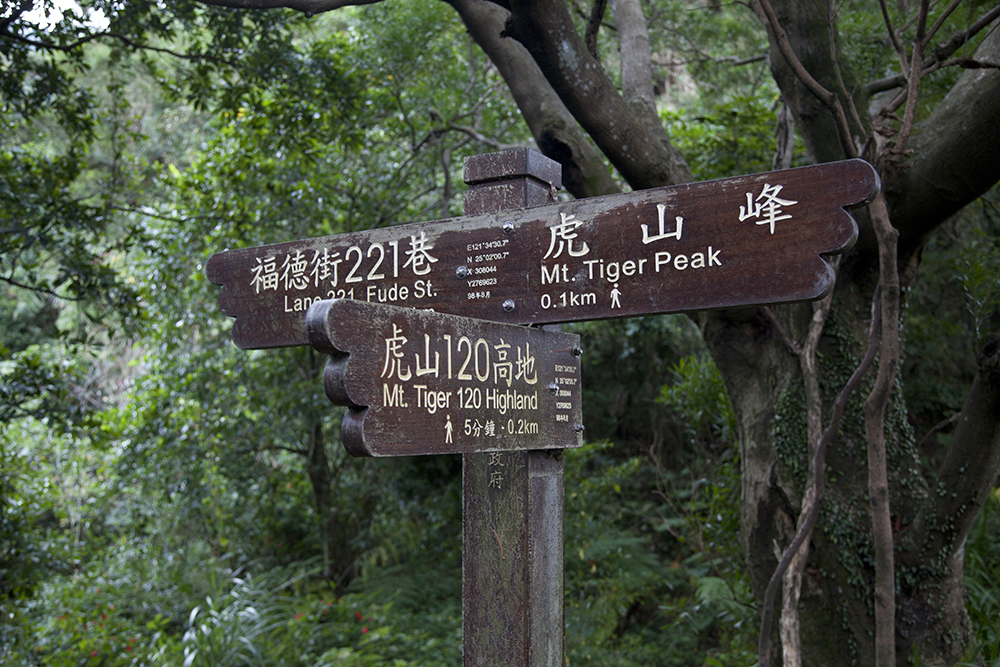
Signs pointing to Tiger Mountain
Keep walking straight ahead along the ridge, and in a couple of minutes the trail joins a narrow road climbing higher into the hills. Turn right and walk along this road, then in a minute or so left onto another signposted trail that climbs steeply onto the slopes of Mt. Nangang, which rises behind. After a short ascent the trail veers left and evens out, contouring the wooded hillside for some distance. Then, after a brief descent, a junction is met.
Turn left here to head back down into the city, beside the lovely Tiger Mountain Stream, a cool and shady walk in the heat of summer. This path descends back to Fude Street a block or two east of Fengtian Temple. To conquer the main peaks of the ridge, on the other hand, turn right at the junction, heading up stone-faced steps that gain the wooded ridge without too much effort. The trail passes 95 Peak first, topped with a large boulder that commands a magnificent view, and a few minutes further Mt. Nangang itself, offering more great vistas.
Follow the signposted trail ahead along the spine of the ridge westwards to Mt. Muzhi, a knobby formation of sandstone that’s easy to scale, and commands the finest view on the entire ridge – a 360-degree panorama north and west over the city and the Yangmingshan mountains behind, east over the towns of the Keelung River valley, and south over Muzha and forested mountains rolling into the distance beyond – a perfect place for lunch.
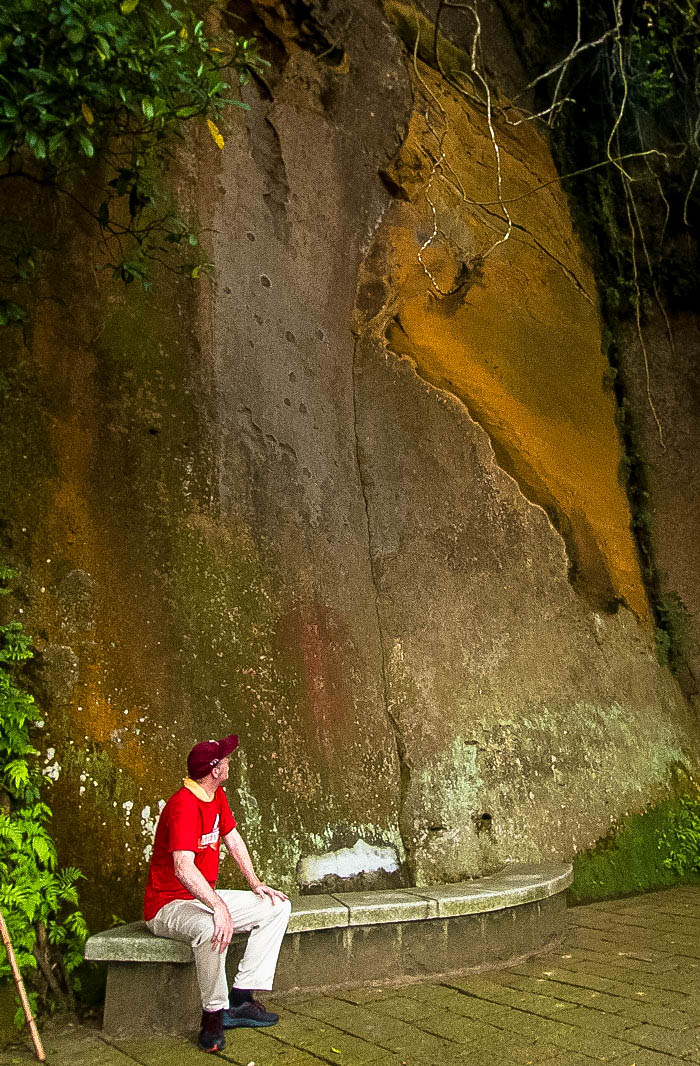
Interesting wall at Elephant Mountain
The descent off the ridge from Mt. Muzhi is quite long and very steep (it’s definitely better going down this way than struggling up!). At the bottom, pass a temple with a large statue of Guanyin, the Goddess of Mercy, to the right of the path, after which a short climb takes you to Elephant Mountain. There’s little to see at the true summit, but follow the stone path ahead downhill and in a minute or two the trees part and the famous viewpoint with its cluster of large boulders and eye-poppingly close view of Taipei 101 makes a great climax to the walk.
Walking down the steps ahead, it’s less than 20 minutes to MRT Xiangshan Station. For a fascinating and scenic extension to the hike, however, take the first junction on the right just below the viewpoint, to join a quiet trail contouring the side of Elephant Mountain, which after a short distance takes you along the base of sandstone cliffs. Pass through a curious natural tunnel that pierces the cliffs at one point, and in 15 minutes the trail descends to Tianbao Temple, remarkable for the very large, colorful statue of the Earth God carved out of the face of the sandstone cliff behind the temple.
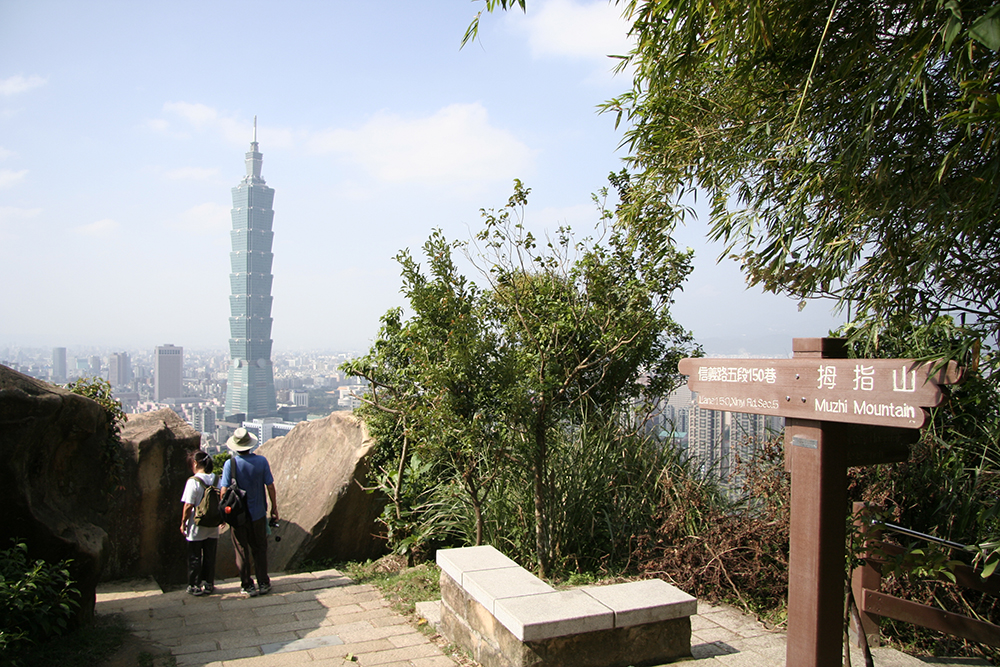
Descending from Elephant Mountain
Pass beneath a small waterfall, walk through the temple to a road, and turn right, picking up a trail that climbs back to the base of the cliffs, then proceeds left along the foot of the sandstone bluffs beneath Panther Mountain. A succession of smaller statues, also cut out of the rock, stand beside the trail; representing other Daoist gods, all are colorfuly painted. Finally, descending to a park below Tianbao Temple, walk down to a residential street here, turn right onto Songshan Road at the end, and follow it for 20 minutes to reach Section 5 of Zhongxiao East Road. MRT Houshanpi Station is 50 meters away, on the left.
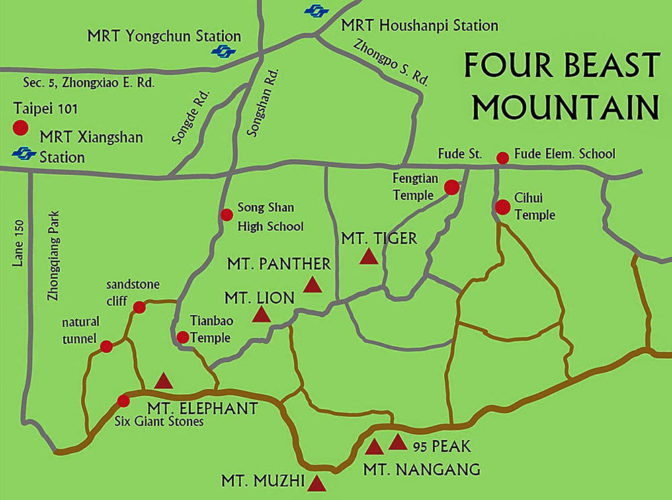
Further reading on other sites:
Josh Ellis Photography: Elephant Mountain (象山步道)
Foreigners in Taiwan: Nangang Tea Mountain 南港茶園區









